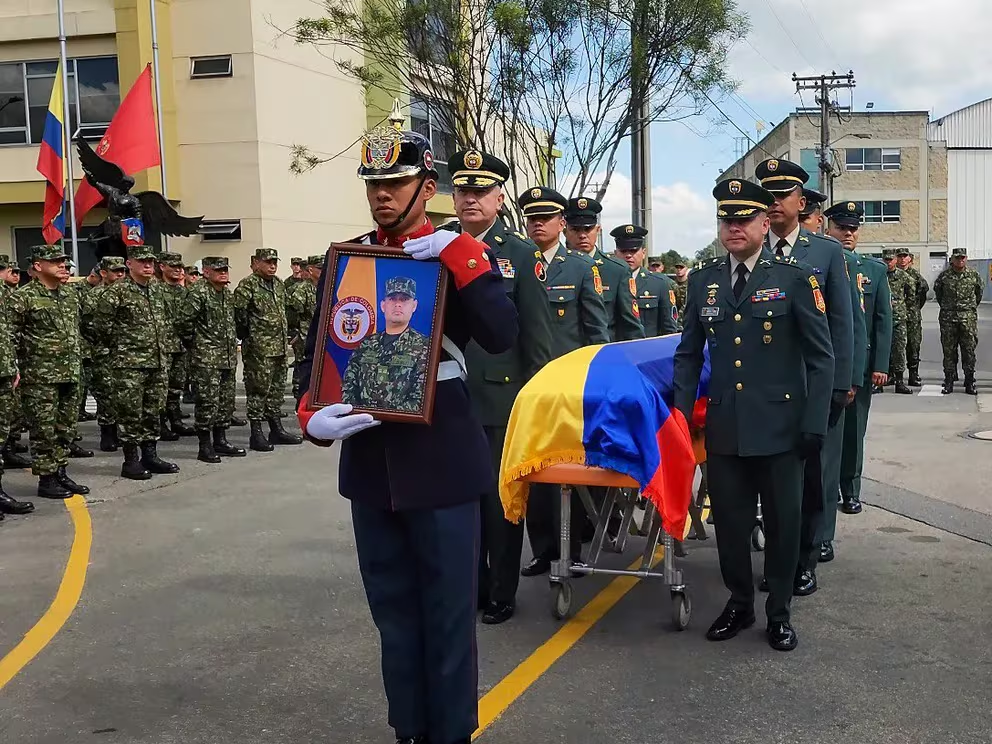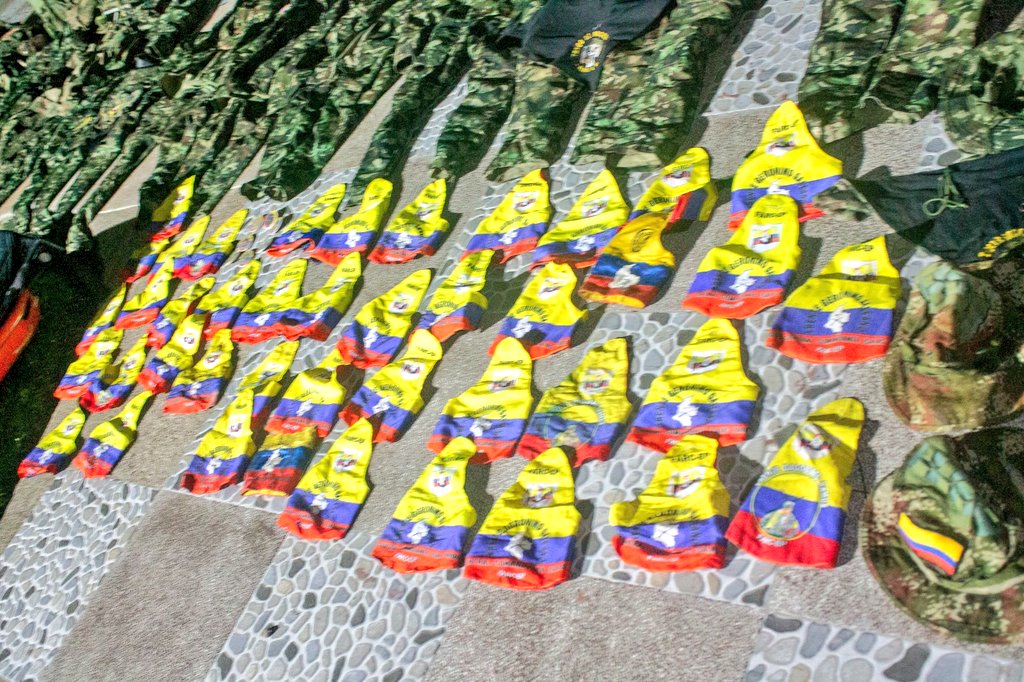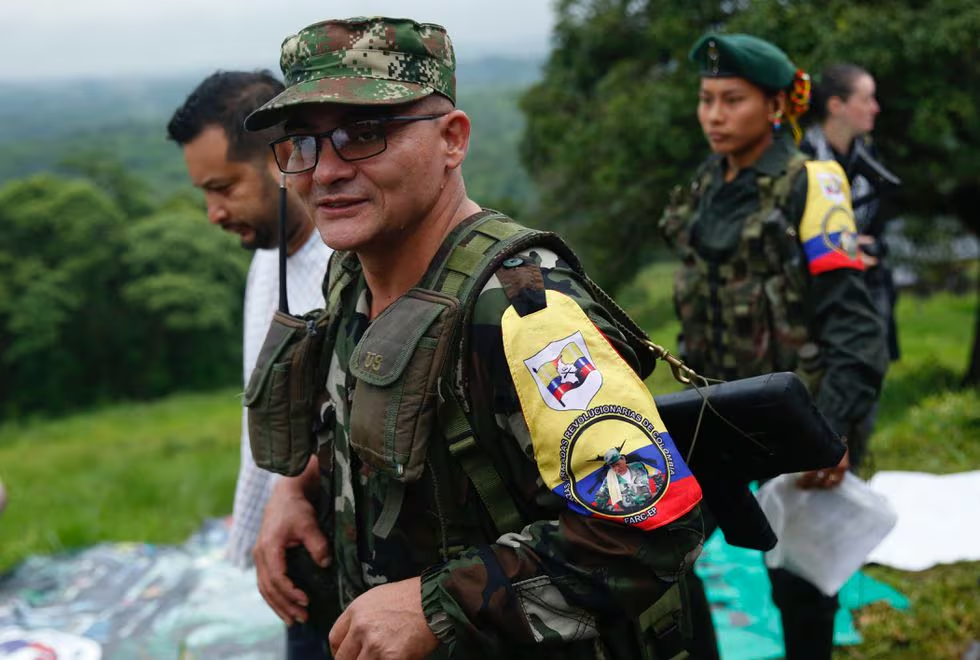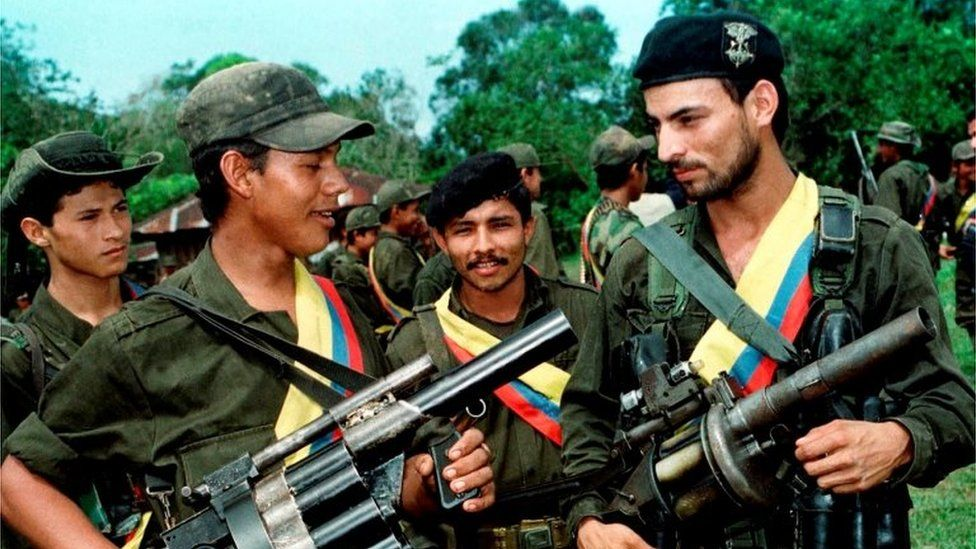Talks regarding the release of two government officials belonging to the Federal Prosecutor’s Office and their “companion” stalled on Wednesday between the government and a splinter group of the Revolutionary Armed Forces of Colombia, known as the Estado Mayor Central (FARC-EMC).
A Stalled Release:
The three government officials were taken captive in late April by the FARC-EMC, who stated the two were in good health before continuing to claim the trio would be released with the assistance of international organizations such as the UN’s mission in Colombia and the Colombian Red Cross.
However, the release of the hostages has stalled following demands that the military cease operations in five municipalities within Cauca for 48 hours by the FARC-EMC. Cauca, a department known for the FARC’s heavy presence, has been the site of a number of confrontations between the military and the armed group, where six soldiers lost their lives in two attacks by the FARC-EMC.

These demands, which the FARC alleges are in order to facilitate the hostages’ release, were “rejected one by one” by the Colombian government, according to the FARC. The Colombian Ministry of Defense confirmed the denial, stating that “the area they request is too large.”
The FARC claimed in a statement posted on their X account that military operations against the group have endangered the lives of the captives, stating that “the detainees have been victims of military assaults, and thanks to the maneuver and expertise of the units that guard them, they have been removed alive from the places of confrontations.”
Those taken captive include two prosecutors, Gerson and Bethy Amanda, alongside another described as “their companion” and a possible family member of the pair, Mara Yenny. The trio were captured while en route to the municipality of Popayan in Cacua when they were ambushed and taken captive in a rural area known as Dominguillo just outside of Santander de Quilichao, another municipality.
Desde El Pozón, Cartagena, el ministro de Defensa, @Ivan_Velasquez_, en el marco del #GobiernoConLosBarrios, explicó que recibieron una solicitud del autodenominado Estado Mayor Central para despejar cinco municipios en el Cauca que faciliten la liberación de los funcionarios… pic.twitter.com/TuSWgVU1S3
— Mindefensa (@mindefensa) May 8, 2024
The United Nations in Colombia expressed their concern regarding the kidnapping of government officials following the news of the incident, urging that the “life and integrity of these three people be respected.” before requesting that “those who have them in their possession to release them, immediately, safe and sound.”
The FARC assured that the captives were being treated well, saying in a section of the statement directed at the friends and families of the hostages that “while they are under our power, they will continue to be treated with dignity, providing them with the conditions of security, health, food and clothing as established by our principles.”
Analysis:
The approval of a temporary ceasefire in Cauca would allow the FARC-EMC to regain their footing and reposition guerillas for future attacks against government forces in the region. Furthermore, it could allow the armed group sufficient time to evacuate or move products of the group’s illegal narcotics enterprises if the group believes their locations are compromised.
The Colombian government likely sees this possibility and seeks to prevent the FARC from capitalizing on such a ceasefire.
The recent escalations of tensions in Cauca follow the dissolution of a ceasefire between government forces and the FARC-EMC after the group attacked an indigenous community, which ultimately led to the death of a community leader and the injury of two others.
Attacks against government forces have further harmed relations between the FARC-EMC and the Colombian government, preventing any thought of a ceasefire from entering the minds of Colombians across the country. While the government has previously stated they would not reenter peace talks with the FARC-EMC, some believed talks would reengage due to the long history of the FARC or Colombian government breaking ceasefires before eventually returning to negotiations.

However, this harming of relations does not mean that the government will not pursue the reopening of peace talks with the FARC. It remains possible that Colombian authorities will use the suspension of the ceasefire to weaken the FARC-EMC further, allowing the government to both have an upper hand if negotiations are resumed while also curbing the FARC-EMC’s growth that was seen under the previous ceasefires with the government.
This refusal to reenter peace talks with the FARC-EMC can also be seen as a departure from President Gustavo Petro’s controversial plan to bring “total peace” to Colombia, ending the 60-year-long civil struggle that has led to the deaths of 450,000 people, while more remain missing. This plan is characterized by the president’s attempts to make peace with the various armed groups active in Colombia as opposed to military action in an effort to wipe them out.
This policy has achieved mixed results; while ceasefires with the FARC-EMC have been negotiated, talks have previously stalled with the National Liberation Army (ELN), a similar communist guerilla group.
FARC:
The FARC, otherwise known as the Revolutionary Armed Forces of Colombia, were originally leftist guerillas dedicated to bringing class revolution to Colombia during a period in the nation’s history known as “La Violencia,” otherwise known as the Violence. This period followed the assassination of the Liberal Party’s leader and presidential frontrunner, Jorge Eliecer Gaitan, in 1948, an assassination that would throw Colombia into chaos.
After his death, leftists in Bogota began what is known as the Bogotazo, a massive riot that quickly expanded across Colombia, leading to La Violencia. A number of right-wing paramilitary organizations and leftist guerilla groups would be formed during this period of Colombian history.
One of the most well-known was the Revolutionary Armed Forces of Colombia, or FARC. The group would find its formation after a failed attack in 1964 by the Colombian military on what was known as a self-defense community, one of a number of communist-held areas in rural Colombia. Despite the communists only having 48 active fighters opposed to the 16,000 Colombian soldiers, the group would survive the attack and escape to the nearby mountains where the FARC would be formed.

Since then, the FARC has operated as rebels, launching guerilla attacks on military convoys and strategic targets. Despite originally being made up of only 48 fighters, the group’s ranks would swell to the hundreds in later years. For much of its early history, the FARC would be limited to small-scale guerrilla encounters with government forces, but after what has been coined the “Coca Boom,” a period in which the production of cocaine skyrocketed, the group found itself with more funds to allocate to their operations.
The FARC would expand their operations into urban Colombia following the Seventh Guerilla Conference in 1982, largely due to their increase in funds. The group would also begin to send promising troops to the USSR and Vietnam for advanced training.
The FARC would eventually agree to a momentous ceasefire with the government in 2016, which would see the bulk of the FARC disarmed and disbanded. Despite the ceasefire, however, a number of members of the FARC continued their operations against the government and the people of Colombia. These groups would label themselves as “fronts,” a leftover from the group’s original structure, with two factions emerging.

The first, the FARC-EMC, would be founded by Gentil Duarte, who was sent back to Colombia amid the peace conference in Cuba due to Ivan Mordisco separating himself and his soldiers from the peace process. The two would send out messengers to a number of commanders of the FARC’s other fronts, seeking to unite them into one body and continue the organization’s armed struggle against the government. This would succeed, and in 2017, Duarte and Mordisco would announce the birth of the FARC-EMC.
Their main rival would prove to be the Second Marquetalia, which was formed by a number of former FARC commanders, many of whom previously accepted the ceasefire but would rearm in 2019. The group’s main territory encompasses the Venezuelan-Colombian border, where the FARC has historically enjoyed a great deal of protection from authorities in Venezuela. The Second Marquetalia would even come into conflict with another dissident faction of the FARC. This faction, known as the 10th Front, had refused to support the leaders of the Second Marquetalia, who had attempted to pull rank on the dissidents in Venezuela following their rearmament. Following the refusal, the 10th Front would face direct action by Venezuela’s military, in what Insight Crime reports was an attempt to grant further power to the Second Marquetalia.


